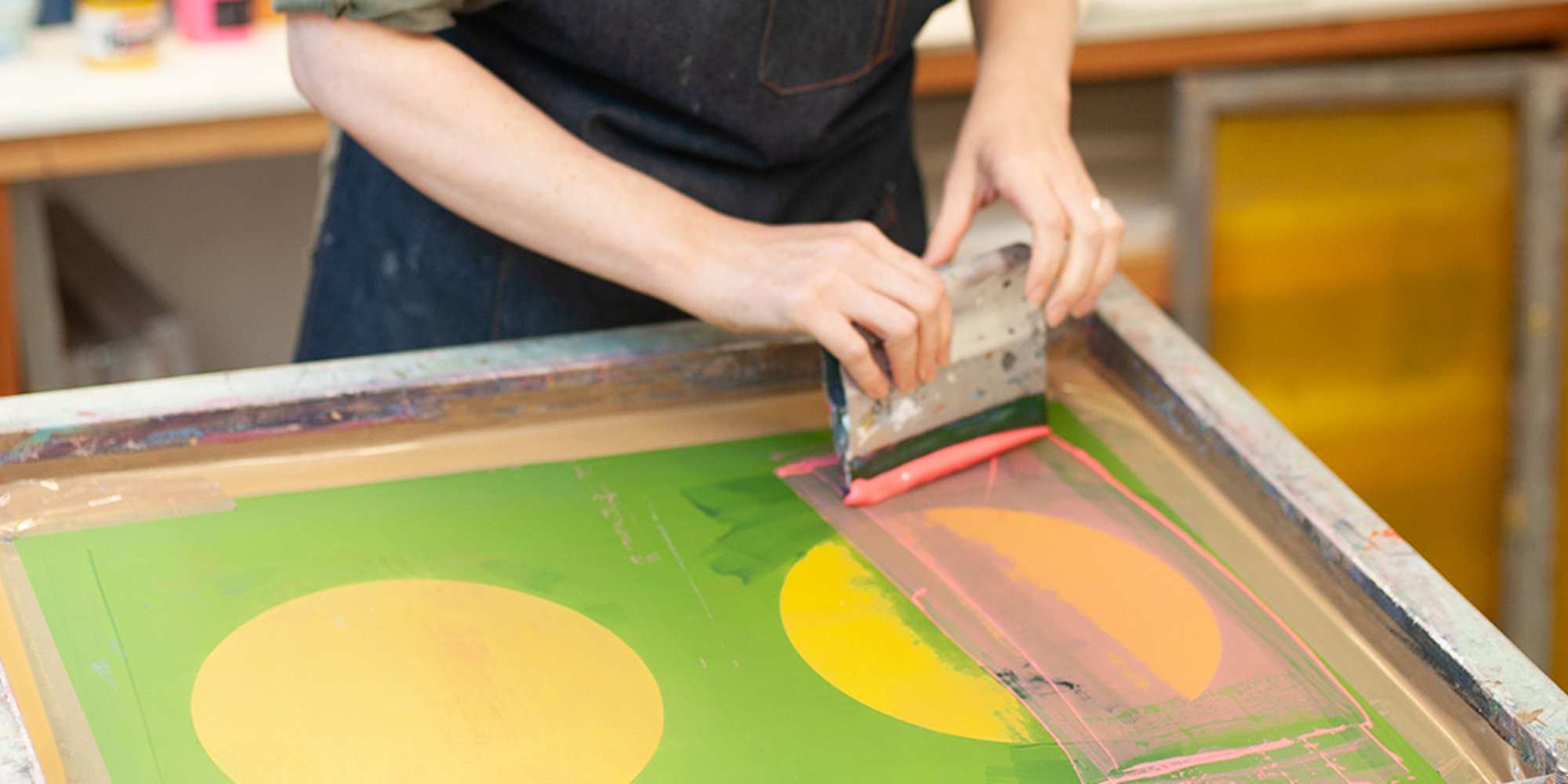Printing is pretty easy, right? All you have to do is pick an image and press a button so that masses of identical printed copies shoot-out. Wrong. Not this kind of printing. Screenprinting is a complex artform that involves much preparation, a creative eye, precision and lots of patience.
What’s a screenprint?
A screenprint is essentially the modern adaptation of a stencil, which dates as far back as 30,000 BC (think cave drawings). However, it wasn’t until the 1920s and 30s that the modern screenprinting process came to be. In the US, screenprints are still referred to as silkscreens, even though silk is no longer used. And even further, fine art screenprints are referred to as ‘seriographs’. Talk about an identity crisis.
Just like stencils, screenprinting makes it easier to mass-produce images, meaning you can create editions of the same artwork. To give you an idea, Andy Warhol, famous for his images of Marilyn Monroe, created approximately 800 works on paper in his 58-year lifetime.
How are they made?
Mesh (typically made of polyester) stretched onto a frame is strategically blocked-off using non-permeable material (also called ‘emulsion’) to form your stencil of choice. The mesh is then exposed to light which reveals a negative of the image to be printed. Ink is then forced through the mesh using a squeegee and voilà! You have your screenprinted image.
This technique allows artists to create the same image but alternate or layer colours. For example, in Ellie Dunlop’s ‘Keybridge House’ series, the artist prints a different coloured square over the initial image, creating several versions of the same image.
Screenprints can increase in complexity by amending the stencil and using even more layers of colour to add detail. Screenprints like these are incredibly difficult to create, as you need to ensure the paper and stencil are lined-up perfectly so that the paint is added properly. The piece below by Simon Tozer is an example.
As these types of prints are created by hand, no matter how experienced the artist is, they’re not always going to be quite as perfect as those coming from your computer printer. That’s all part of the beauty of it though.
Where did the modern screenprint come from?
The modern screenprint began as a silkscreen in the early 1900s, and was used primarily for commercial printing purposes. However, the lesser known first wave of fine art screenprinting didn’t come until roughly the 1930s, under the Work Progress Administration (WPA) in the US.
Established by President Franklin D. Roosevelt, the WPA aimed to create more jobs for Americans, doing everything from cooking school lunches, building hospitals and creating artworks for public areas. It placed a strong focus on fine art and, in fact, is known as the last big ‘push’ for publicly funded art in the US.
Screenprinting in particular emerged as a highly popular medium for artists working under the WPA, which resulted in them creating The Silk Screen Unit in 1939, to further promote the interest in creating works in this medium.
How was the screenprint popularised?
In the 1950s in North America, artists such as Roy Lichtenstein and Warhol led the second wave of screenprinting, which arguably popularised the medium.
In the context of a heated political period in the ‘60s, screenprinting as a means to mass-produce prints became the choice medium for artists to critique the rise of mass media. The ironic use of the screenprint to create images from mass media became iconic of the Pop Art movement, in which artists drew inspiration from popular and consumer culture.
Screenprinting continues to be a popular medium today, both as a means to explore artistic creativity and to communicate contemporary issues. It’s also responsible for some of the most iconic contemporary works of art, such as the ‘Hope’ poster of President Barack Obama by Shepard Fairey.
Pretty impressive right?
*Cover image via Kate Watkins


